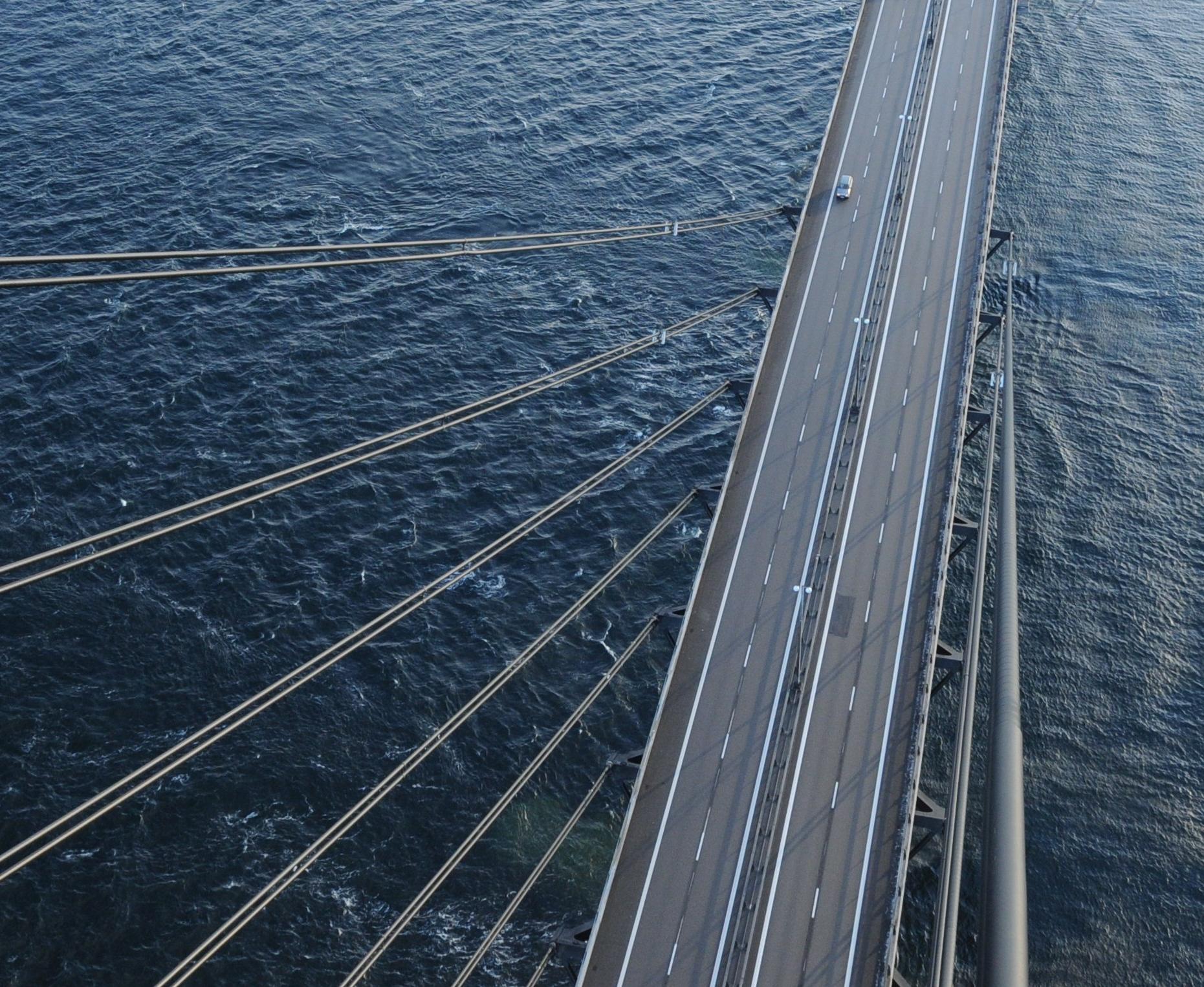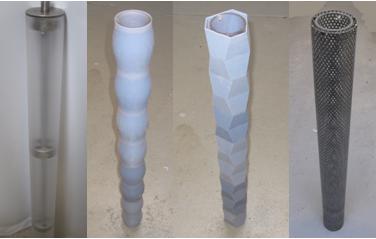Article No. 11
Academic Ph.D. Project (November 2009 - October 2012)
Student: Kenneth Kleissl
Supervisors: Christos T. Georgakis ; Holger H. Koss
Background and Motivation
Through improved bridge monitoring and a greater openness between bridge owners and engineers, it has become increasingly apparent that a large number of the world’s long-span cable-supported bridges suffer some form of cable vibration. These vibrations have the potential to lead to long-term fatigue damage and economic loss, through a reduction of consumer confidence. Examples of bridges with a history of cable vibrations include the First and Second Severn Crossings, Øresund Bridge, Storebælt East Bridge, Humber Bridge and the Fred Hartman Bridge.

Figure 1: Twin cable arrangement on the Øresund cable-stayed bridge, Denmark/Sweden.
Attempts to eliminate or dampen these vibrations have been met with varying degree of success. To date no ultimately successful cable vibration control system has been devised for all types of cable under all conditions. This is most probably due to the fact that the observed vibrations are a result of varying excitation mechanisms, several of which may need differing control strategies to combat. Tested control systems have included cable-ties, viscous/magnetoreological dampers, tuned mass dampers, spiral strands and dimples.
Nevertheless, recent work on aerodynamic control of cables through cross-sectional shape modification has shown great promise. Aerodynamic control refers to means of eliminating undesirable vibrations of a structure through careful modification of the structural shape and surface, either passively or actively. PhD-student Kenneth Kleissl recently showed that circular cylinders that exhibit galloping instability, at specific wind angles of attack, can be modified passively, so that these instabilities are eliminated altogether. Several of these passive modifications can be seen in Figure 2 and include a wavy cylinder, faceted cylinder and shrouded cylinder.

Figure 2: (from left to right) plain cylinder, wavy cylinder, faceted cylinder and shrouded cylinder.
The objective of this research project is to further examine the viability of modifying cable shape and surface, for the elimination of not only cable galloping, but also vibrations due to vortex shedding and buffeting – always under the prevalent meteorological conditions in Scandinavia.
Ongoing Research Work
Spring 2010:
At the moment work is focused a detailed literature study together with a literature review journal paper which shall be submitted to Fluids and Structures. Also a shortened version will be submitted for SEMC 2010. Beside these papers a rough CFD analysis of drag on shrouded cylinders needs to be completed.
Related Publicaitons
Published
MSc Thesis "Vibration Control of Bridge Cables" .
Submitted
ICSBOC 2010 conference paper "Bridge ice accretion and de- and anti-icing systems: A review".
In Preparation
SEMC 2010 conference paper "Aerodynamic control of bridge cables through shape modification: a preliminary study".
Fluid&Structures paper "Aerodynamic control of bridge cables through shape modification: a review".